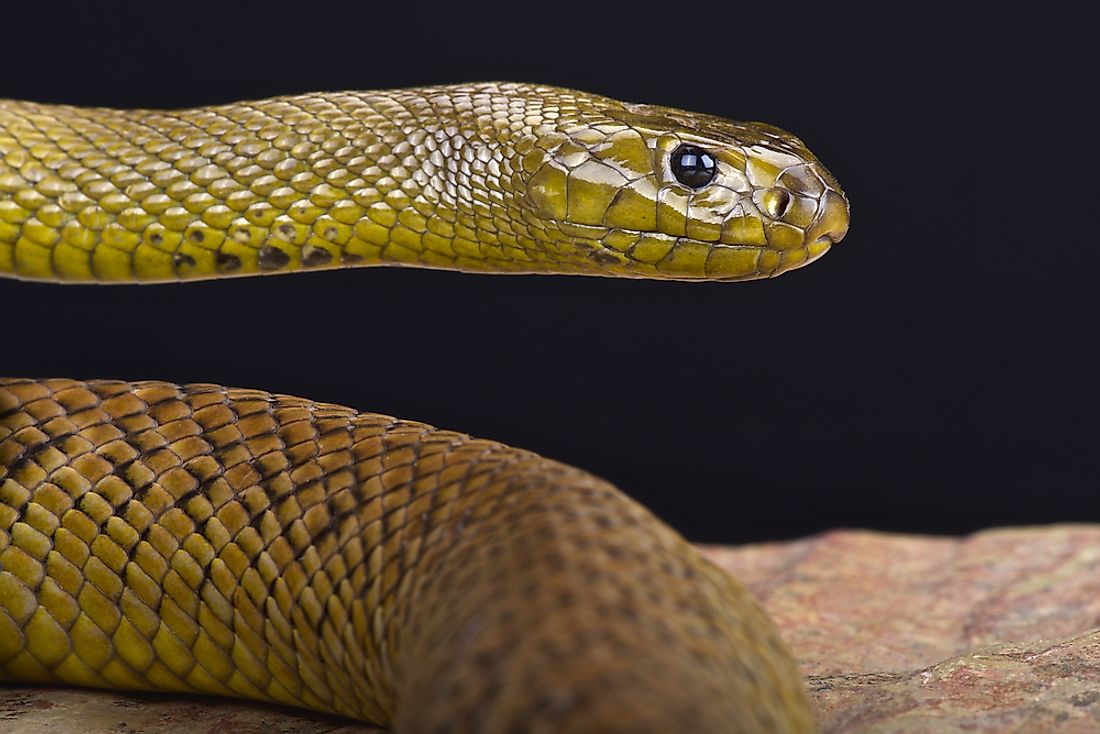
10. Western Australian Tiger Snake
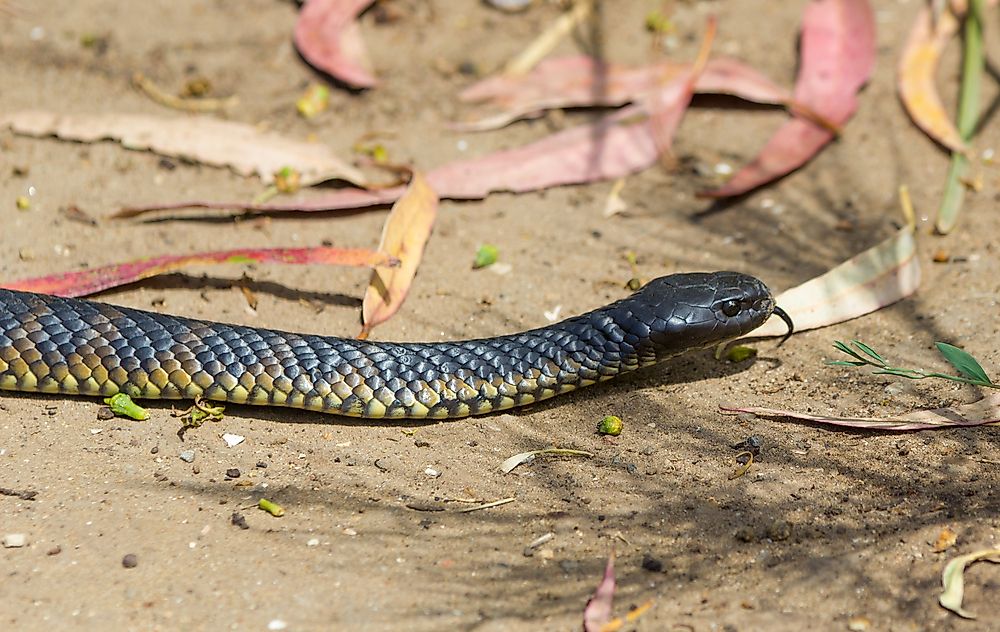
The Western Australian tiger snake is one of Australia’s most venomous snakes. Its venom has a murine LD50 of 0.194 mg/kg. It inhabits swampy regions and wetlands and feeds on small mammals and birds.
9. Black Tiger Snake
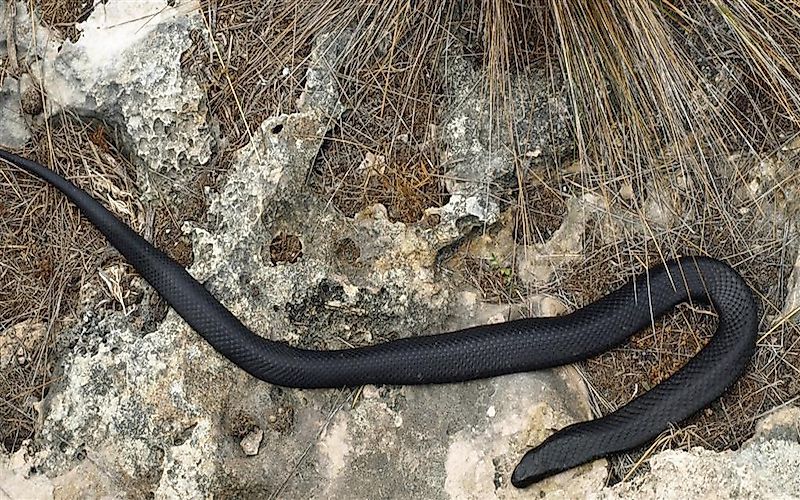
The black tiger snake is an indigenous snake species of Australia. The snake exhibits variance in color mostly banded like those visible on a tiger. The tiger snake has a preference for coastal regions, creeks, and wetlands. It grows to a maximum of 10 feet, and it is ovoviviparous. The snake’s venom has a murine LD50 of 0.131 mg/kg, and it contains myotoxins, coagulants, neurotoxins, and hemolysins. The snake’s venom causes adverse effects in humans such as breathing difficulties, numbness, tingling sweating, and paralysis. When the tiger snake is disturbed, it flattens its body leaving its head raised ready to attack.
8. Black-Banded Sea Krait
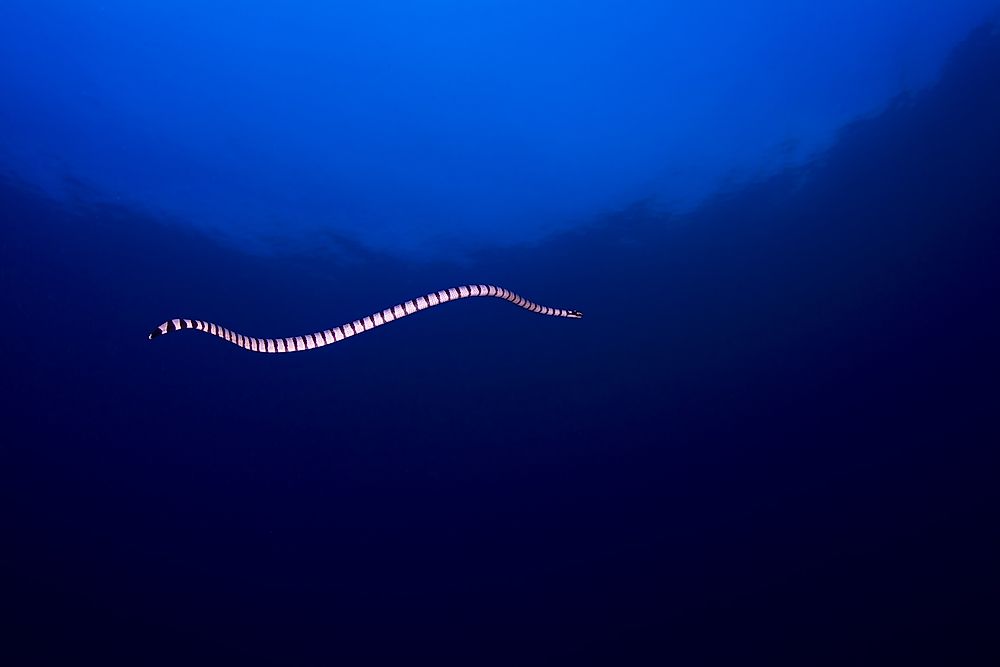
The black-banded sea krait inhabits the Pacific Ocean’s western warm waters, and its habitat range includes the eastern coast of Brunei and the Malay Peninsula and Halmahera, Indonesia. The snake comes up for air every six hours, and it has a preference for coral reefs. Its venom has a toxicity of 0.111 mg/kg when subjected to the subcutaneous injection LD50 test. The black-banded sea krait feeds on fish, and it rarely attacks humans, unless threatened. The Japanese refer to the snake as erabu umi hebi, and it is a winter delicacy in the southern part of the country.
7. Many-Banded Krait
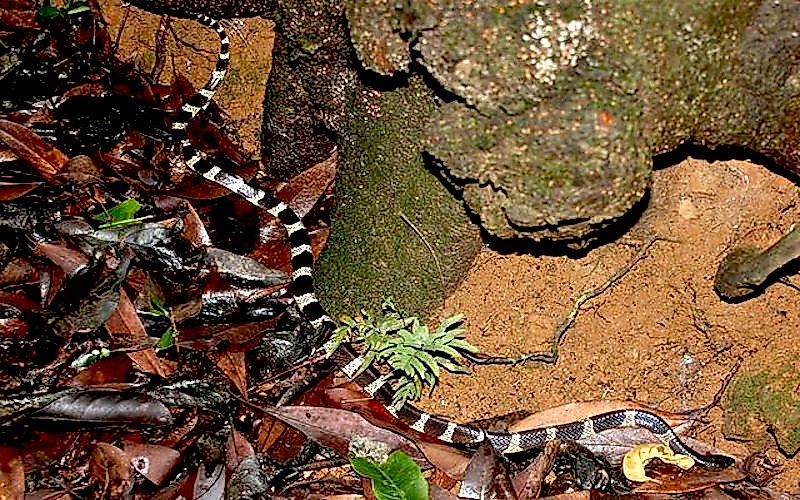
The Many-branded Krait’s habitat range includes Burma, Mainland China, Laos, Taiwan, and Vietnam. Its measure of LD50 of 0.108 mg/kg makes it earth’s seventh most venomous snake species. It is mostly observed in marshy regions as well as woodlands, plantations, mangroves, and shrublands. Its diet includes fish, snakes, frogs, lizards, rodents, and eels. The snake’s venom causes symptoms such as interrupted respiration, tunnel vision, diplopia, general ache, loss of voice, and discomfort in the chest region. The risk of death depends on the severity of the bite.
6. Coastal Taipan
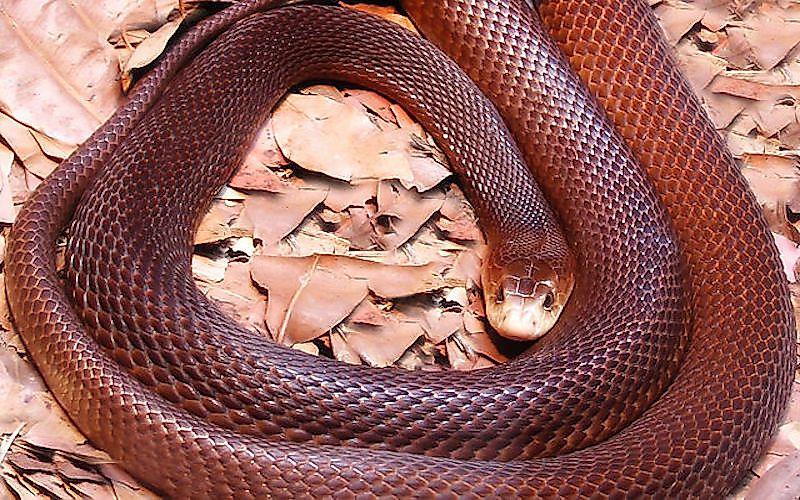
The coastal taipan is a native snake species of Australia that inhabits the country’s eastern and northern coastal areas. It is among the world’s most venomous terrestrial snakes with a murine LD50 of 0.099mg/kg. A fully mature coastal taipan is typically between 4.9 to 6.6 feet making it Australia’s longest venomous snake. Its venom is especially effective in hunting mammals such as rats and mice. The venom is fatal and affects the nervous system. An untreated victim will die within 2.5 hours of being bitten.
5. Peron’s Sea Snake
Habitats of the Peron’s sea snake include the Strait of Taiwan, Gulf of Siam, Coral Sea islands, and other regions. Its venom reflects a value of 0.079 mg/kg when subjected to the subcutaneous injection LD50 test. The Peron’s sea snake is distinguished from other sea snakes by the spines on its head. Its average snout-vent length is 39 inches. It feeds on small fish and gives birth to its young ones, as opposed to laying eggs.
4. Yellow Bellied Sea Snake
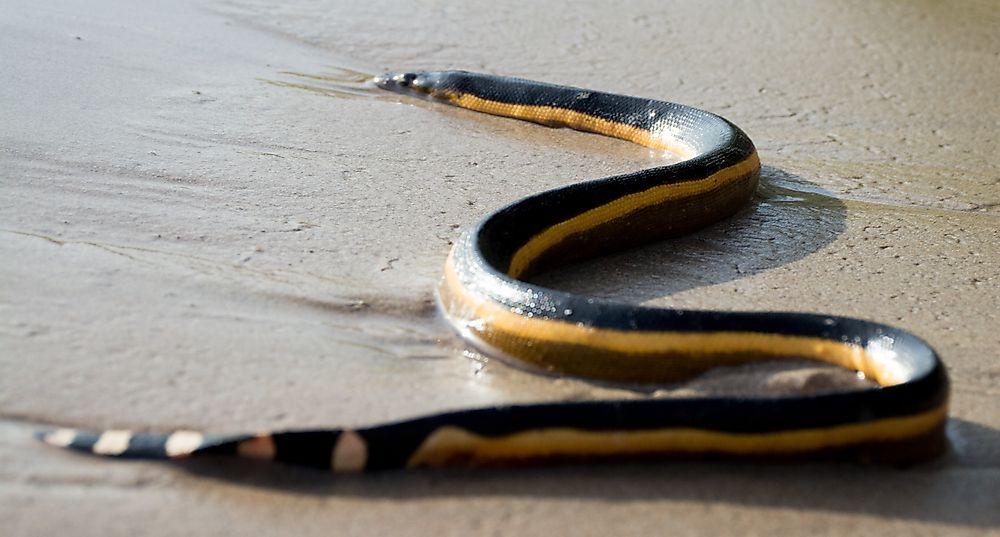
The yellow-bellied sea snake is well established in earth’s tropical oceanic waters (with the exception of the Atlantic Ocean). It is characterized by a black back and a yellow underbelly. The murine LD50 of the snake’s venom is 0.067 mg/kg. The venom has fatal venom and affects the skeletal muscle. The venom can be neutralized by anti-venom. The yellow-bellied sea snake is fully adapted to marine habitats, and it feeds on fish species by swallowing them whole.
3. Eastern Brown Snake
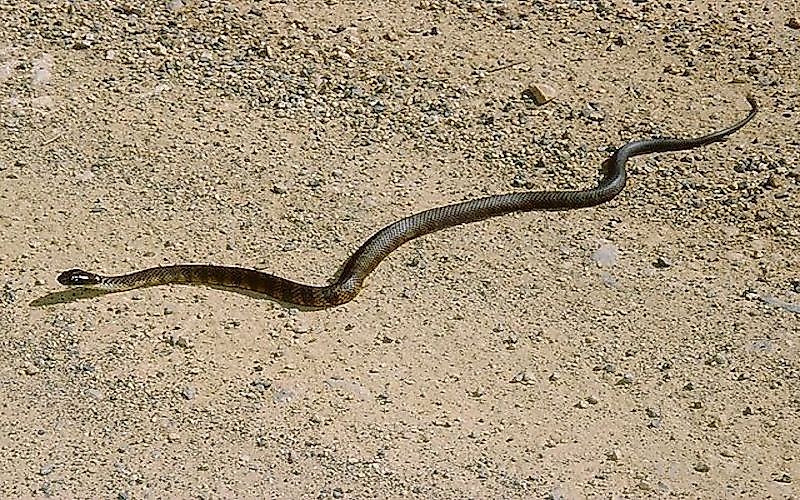
The eastern brown snake is an indigenous species to Australia, Indonesia, and Papua New Guinea. It is characterized by different shades of brown, and its average length ranges between 3.6 to 5.9 feet. The snake’s diet consists of rodents while its habitat range includes grasslands, forests, savannah woodlands, and scrublands. The snake’s venom has a value of 0.053 mg/kg based on the subcutaneous injection LD50 test. In humans, the snake’s venom has effects such as renal failure, dizziness, convulsions, and diarrhea.
2. Dubois’s Seasnake
The Dubois’ seasnake inhabits the coasts of the Coral, Timor, and Arafura Seas, and the Indian Ocean in Australia, Papua New Guinea, and New Caledonia. The venom of the snake has a toxicity level of 0.044 mg/kg when subjected to the subcutaneous injection LD50 test. Its prey is moray eels and other fish living on the sea floor. The Dubois’ seasnake ranks as the world’s second most poisonous sea snake.
1. Inland Taipan
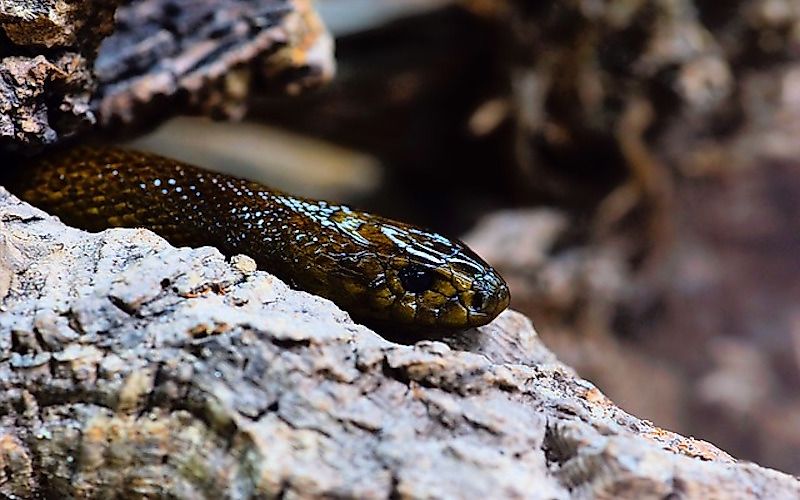
The inland taipan inhabits the semi-arid parts of central east Australia. It achieves an average length of 5.9 feet with a maximum length of 8.2 feet. The inland taipan’s venom measures as the most toxic with a murine LD50 value of 0.025mg/kg. The low value means that the inland taipan needs a small dose of venom to paralyze prey. Its venom is estimated to be toxic enough to kill a minimum of 100 adult men. It preys on mammals but it is reclusive and shy, and thus bites are rarely reported by humans. Once bitten, an individual will experience localized pain followed by general feelings such as vomiting, diarrhea, dizziness, headache, convulsions, and abdominal pain. If left untreated, the victim succumbs to organ failure.
Which Are The Most Venomous Snakes in the World?
| Rank | Snake | Region | Subcutaneous injection LD50 (Saline) |
|---|---|---|---|
| 1 | Inland taipan | Australia | 0.025 mg/kg |
| 2 | Dubois’ seasnake | Coral Sea, Arafura Sea, Timor Sea and Indian Ocean | 0.044 mg/kg |
| 3 | Eastern brown snake | Australia, Papua New Guinea, Indonesia | 0.053 mg/kg |
| 4 | Yellow bellied sea snake | Tropical oceanic waters | 0.067 mg/kg |
| 5 | Peron’s sea snake | Gulf of Siam, Strait of Taiwan, Coral sea islands, and other places | 0.079 mg/kg |
| 6 | Coastal Taipan | Australia | 0.099 mg/kg |
| 7 | Many-banded krait | Mainland China, Taiwan, Vietnam, Laos, Burma | 0.108 mg/kg |
| 8 | Black-banded sea krait | eastern coast of the Malay Peninsula and Brunei, and in Halmahera, Indonesia.. | 0.111 mg/kg |
| 9 | Black Tiger snake | Australia | 0.131 mg/kg |
| 10 | Western Australian Tiger snake | Australia | 0.194 mg/kg |



 Users Today : 19
Users Today : 19 Total views : 665024
Total views : 665024